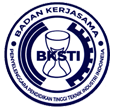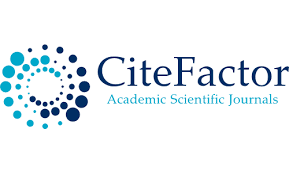Analysis of Service Quality Measurement at Vocational Higher Education with the Higher Education Performance Method (HEdPERF) and Importance Performance Analysis (IPA)
Abstract
Keywords
Full Text:
PDFReferences
Abbas, J., & Sagsan, M. (2019). Identification of key employability attributes and evaluation of university graduates’ performance. Higher Education, Skills and Work-Based Learning, 10(3), 449–466. doi:10.1108/heswbl-06-2019-0075
Abbas, J. (2020). Service quality in higher education institutions: Qualitative evidence from the students’ perspectives using maslow’s hierarchy of needs. International Journal of Quality and Service Sciences. doi: 10.1108/IJQSS-02-2020-0016
Abdullah, F. (2006). The development of HEdPERF: A new measuring instrument of service quality for the higher education sector. International Journal of Consumer Studies, 30(6), 569–581.
Afandi, M., Chamalah, E., Wardani, O. P., & Gunarto, H. (2013). Model dan metode pembelajaran. Semarang: Unissula.
Ali, F., Rasoolimanesh, S. M., Sarstedt, M., Ringle, C. M., & Ryu, K. (2012). The importance of service quality for competitive advantage: a literature review. Managing Service Quality: An International Journal, 22(4), 327-339.
Ali, F., Zhou, Y., Hussain, K., Nair, P. K., & Ragavan, N. A. (2016). Does higher education service quality effect student satisfaction, image and loyalty? A Study of international students in malaysian public universities. Quality Assurance in Education, 24(1), 70–94. doi: 10.1108/QAE-02-2014-0008
Alves, H., & Raposo, M. 2010. The influence of university image on student behaviour. International Journal of Educational Management, 24(1), 73-85. doi: 10.1108/09513541011013060
Annamdevula, S., & Bellamkonda, R. S. (2016). Effect of student perceived service quality on student satisfaction, loyalty and motivation in Indian universities: Development of HiEduQual. Journal of Modelling in Management, 11(2), 488-517. doi: 10.1108/JM2-01-2014-0010
Baxter, L. A., & Wilmot, W. W. (1984). “Secret tests” social strategies for acquiring information about the state of the relationship. Human Communication Research, 11(2), 171–201. doi: 10.1111/j.1468-2958.1984.tb00044.x.
Brady, M. K., Cronin, J. J., & Brand, R. R. (2002). Performance-only measurement of service quality: a replication and extension. Journal of Business Research, 55(1), 17–31. doi:10.1016/s0148-2963(00)00171-5
Bressolles, G., Durrieu, F., & Senecal, S. (2014). A consumer typology based on e-service quality and e-satisfaction. Journal of Retailing and Consumer Services, 21(6), 889-896. doi: 10.1016/j.jretconser.2014.07.004
Chandra, T., Hafni, L., Chandra, S., Purwati, A. A., & Chandra, J. (2019). The influence of service quality, university image on student satisfaction and student loyalty. Benchmarking: An International Journal. doi:10.1108/bij-07-2018-0212
Darmastuti, Hajeng. (2014). Manajemen Sarana dan Prasarana dalam Upaya Peningkatan Kualitas Pembelajaran pada Jurusan Teknik Komputer dan Informatika di SMK Negeri 2 Surabaya. Inspirasi Manajemen Pendidikan, 3 (3).
Daryanes, F., Darmadi, D., Fikri, K., Sayuti, I., Rusandi, M. A., & Situmorang, D. D. B. (2023). The development of articulate storyline interactive learning media based on case methods to train student's problem-solving ability. Heliyon.
Dasna, I. W. (2015). Hakikat Pembelajaran Inovatif dan Interaktif. Tangerang Selatan: Universitas Terbuka, 1-61.
Duque, L.C. (2013). A framework analyzing higher education performance: Student’s satisfaction, perceived learning outcomes and dropout intentions. Total Quality Management & Business Excellence Journal, 25(1–2), 1–21. doi: 10.1 080/14783363.2013.807677
Elliott, K. M., & Shin, D. (2002). Student satisfaction: An alternative approach to assessing this important concept. Journal of Higher Education policy and management, 24(2), 197-209. doi:10.1080/1360080022000013518
Fikri, S., Wiyani, W., & Suwandaru, A. (2016). Pengaruh Kualitas Pelayanan Terhadap Kepuasan Dan Loyalitas Mahasiswa (Studi pada Mahasiswa Strata I Fakultas Ilmu Sosial dan Ilmu PolitikUniversitas Merdeka Malang). Jurnal bisnis dan manajemen, 3(1).
Ghozali, Imam. 2018. Aplikasi Analisis Multivariate dengan Program IBM SPSS 25. Badan Penerbit Universitas Diponegoro: Semarang.
Ghufron, A., & Hardiyanto, D. (2017). The Quality of Learning in The Perspective of Learning as A System. In 1st Yogyakarta International Conference on Educational Management / Administration and Pedagogy (YICEMAP 2017) (pp. 255-259). Atlantis Press.
Gustituati, Nurhizrah. (2013). Manajemen Sekolah: Manajemen Program Non Akademik dan Hubungan Sekolah dengan Masyarakat. Padang: UNP Press.
Hui Li Gao. (2020). Understanding the Impact of Administrative Service Quality on Satisfaction and Loyalty Towards University Students. Vol. 5 No. 1, pp. 25–30.
Idochi, O., Chibuzor, O.M. and Chidinma, U. (2000). Analysis Of Safety Management Practices And Quality Education. No. 8, pp. 9–26.
Kementrian Pendidikan dan Kebudayaan Indonesia. (2020). Statistik Pendidikan Tinggi.
Khalid, S. M., Ali, K. A. M., & Makhbul, Z. K. B. M. (2019). Assessing the effect of higher education service quality on job satisfaction among lecturers in premier polytechnics using HEDPERF model. LogForum, 15(3).
Li, S. C. (2013). Exploring the Relationships among Service Quality, Customer Loyalty and Word-Of-Mouth for Private Higher Education in Taiwan. Asia Pacific Management Review, 18(4).
Ningsih, S. and Dukalang, H.H. (2019), Penerapan Metode Suksesif Interval pada Analsis Regresi Linier Berganda. Jambura Journal of Mathematics, Vol. 1 No. 1, pp. 43–53.
Nugroho, N. E. (2020). Academic Service Quality Of Student Loyalty With Student Satisfaction As Intervening Variables In PTS X. Jurnal Akuntansi, Manajemen Dan Ekonomi, 21(4).
Nookhong, J., & Wannapiroon, P. (2015). Development of Collaborative Learning Using Case-based Learning via Cloud Technology and Social Media for Enhancing Problem-solving Skills and ICT Literacy within Undergraduate Students. Procedia - Social and Behavioral Sciences, 174, 2096–2101. doi:10.1016/j.sbspro.2015.02.007
Oldfield, B. M., & Baron, S. (2000). Student perceptions of service quality in a UK university business and management faculty. Quality Assurance in education.
O’Neill, M. A., & Palmer, A. (2004). Importance‐performance analysis: a useful tool for directing continuous quality improvement in higher education. Quality Assurance in Education, 12(1), 39–52. doi: 10.1108/09684880410517423
Osman AR, Saputra RS, Saha J. (2017). Determinants of student satisfaction in the context of higher education: a complete structural equation modeling approach. British Journal of Marketing Studies 5(6): 1-14.
Parasuraman, A., Zeithhaml, V. A., & Berry, L. L. (1988). SERQUAL: a multle-item scale for measuring consumer perceptions of service quality. Journal of Retailing, 64(1), 12-40.
Puan Rachmadhani, A., Utami Handayani, N., Agung Wibowo, M., Purwaningsih, R. and Suliantoro, H. (2018). Factor identification of higher education choice to enhance brand awareness of state university. MATEC Web of Conferences, Vol. 154, pp. 1–5.
Purwanto, Y., Noor, I., & Kusumawati, A. (2020). Service Quality Measurement through Higher Education Performance (HEDPERF) The Case of an Indonesian Public University. Wacana Journal of Social and Humanity Studies, 23(1).
Silva, D. S., Moraes, G. H. S. M. D., Makiya, I. K., & Cesar, F. I. G. (2017). Measurement of perceived service quality in higher education institutions: A review of HEdPERF scale use. Quality Assurance in Education, 25(4), 415-439.
Senthamarai, S. (2018). Interactive teaching strategies. Journal of Applied and Advanced Research, 3(1), S36-S38.
Suliyarti, R. (2019). Manajemen Pemeliharaan Sarana Dan Prasarana Pendidikan Untuk Meningkatkan Kualitas Pendidikan.
Sultan, P., & Yin Wong, H. (2013). Antecedents and consequences of service quality in a higher education context. Quality Assurance in Education, 21(1), 70–95. doi: 10.1108/09684881311293070
Suprapti, N.W.S. 2010. Perilaku Konsumen: Pemahaman Dasar dan Aplikasinya Dalam Strategi Pemasaran. Denpasar: Udayana University Press
Tandijaya, T. N. B. (2018). Analisa Pengaruh Service Quality Terhadap Behavioral Intentions Dengan Perceived Value Dan Customer Satisfaction Sebagai Variabel Intervening Pada Pendidikan Tinggi. Jurnal Manajemen Pemasaran, 12(2), 84-93.
Tawassi, M.H.A.-K.N. (2017), “Article information : Perceived quality of administrative services and its consequences on students ’ behavioral intentions Abstract”.
Teeroovengadum, V., Kamalanabhan, T. J., & Keshwar Seebaluck, A. (2016). Measuring service quality in higher education: Development of a hierarchical model (HESQUAL). Quality Assurance in Education, 24(2), 244–258. doi: 10.1108/QAE-06-2014-0028
Uma and Bougie., S. and R. (2016), Research Methods for Business, Research Methods for Business : A Skill-Building Approach, Seventh ed., John Wiley & Sons, hichester, West Sussex, United Kingdom. doi: 10.1007/978-94-007-0753-5_102084.
Ushantha R.A.C., Kumara P.A.P.S., (2016). A quest for service quality in higher education: Empirical evidence from Sri Lanka. Services Marketing Quarterly, 37(2), 98–108. doi: 10.1080/15332969.2016.1154731
Vaughan, K. (2017), “The role of apprenticeship in the cultivation of soft skills and dispositions”, Journal of Vocational Education and Training, Routledge, Vol. 69 No. 4, pp. 540–557.
Widikusyanto, M. J. (2022). Menguji Lebih Dalam Dampak Dimensi Service Quality Perguruan Tinggi pada Satisfaction, Word of Mouth dan Service Switching. Sains: Jurnal Manajemen dan Bisnis, 14(2), 258-276.
Zlatić, L., Bjekić, D., Marinković, S., & Bojović, M. (2014). Development of Teacher Communication Competence. Procedia - Social and Behavioral Sciences, 116, 606-610. doi: 10.1016/j.sbspro.2014.01.265
DOI: http://dx.doi.org/10.22441/ijiem.v4i2.20202
Refbacks
- There are currently no refbacks.

This work is licensed under a Creative Commons Attribution-NonCommercial 4.0 International License.
IJIEM - Indonesian Journal of Industrial Engineering & Management
Program Pascasarjana Magister Teknik Industri Universitas Mercu Buana
Kampus Menteng - Gedung Tedja Buana, Floor 4th
Jl. Menteng Raya No. 29 Jakarta Pusat- Indonesia
Tlp.: +62 21 31935454 Fax: +62 21 31934474
http://publikasi.mercubuana.ac.id/index.php/ijiem
Email: [email protected]

This work is licensed under a Creative Commons Attribution-NonCommercial 4.0 International License.
The journal is indexed by:





1.png)
.png)
.png)
.png)







